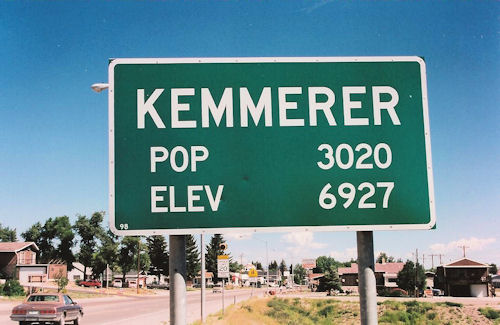

C. F. Lindgren Photographs
If you've ever bought a fossil fish in a gift or rock shop, the chances are excellent it came from the Green River shale near the town of Kemmerer, Wyoming. In 2000 my wife and I went on a fossil expedition to Kemmerer. As we checked into our motel, the person working the desk immediately started to give us names of who we should see for the best fossils. We had already made reservations with the Severns Fossil Quarry for a two hour expedition. We were taken to the quarry by one of the regular diggers. While she worked the actual quarry in a very methodical style, we were given chisels and hammers to work on the waste piles.

View of the Quarry
The fossils can be very difficult to see. Usually all that's visible is a line of vertebrae that is the same color as the rock. The worker showed us what to look for, and we were soon finding many fragments. In other cases (see below) the fossils are easier to see.

Fish Tail Fragments
While we were digging, the worker let out this little squeal of delight, and called us over. She had uncovered an almost perfect crayfish! It was spectacular! She said that when it was properly cleaned, it would bring at least $350! Click on the thumbnail on the arthropod page to see the crayfish in high resolution.
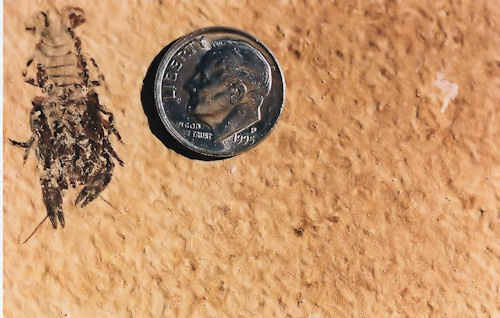
The site itself is magnificent. We were the only two people working the quarry that day. The silence was unreal. Although my wife and I were separated by a fair distance, we could talk to each other in a normal speaking voice and be clearly heard. When a sixteen wheeler went by on the road below, we thought it was right next to us! Seldom do you get that kind of quiet! The work is dirty! You quickly become covered by a fine layer of tan dust. The rock is very soft. The best cleaning tool for the fossils is a soft toothbrush. Don't waste your time doing that at the quarry. Find the telltale signs and do the cleaning later! At the end of our two hours we were driven down to the showroom where they looked over our finds. We were able t keep all of it. Rare samples must be surrendered to Severens.
The two fossils shown below are actually the same fish! When the slab was split, the fish was split also! The spinal column on the image on the left is actually going in, while the one on the right is coming out. Click on the thumbnails on the fish page to see the halves in high resolution.
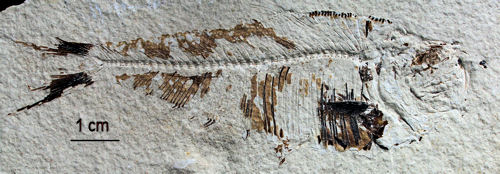
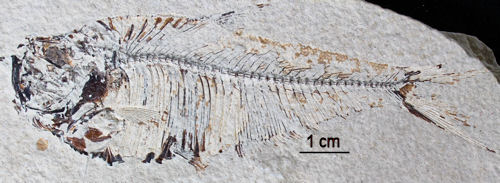
Knightia is the most common fish sample found in the Green River Shale. In some areas there are literally hundreds of samples piled on each other indicating that there must have been a massive fish kill, and the bodies all accumulated in this spot. Click on the thumbnail on the fish page to see this sample of Knightia in high resolution.
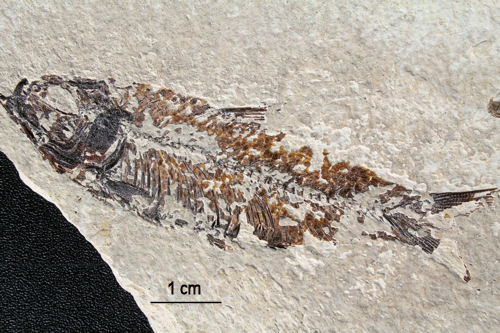
Diplomystus is the second most common fish found in the Green River shale. Most of them are small like this one. But larger specimens ate Knightia! Click on the thumbnail on the fish page to see this sample of Diplomystus in high resolution.

The area around Kemmerer was a shallow area near the edge of the lake. Because of that, in addition to fish fossils you also can find land plants. My wife thinks this is some type of willow.
Click on the thumbnail on the to see this twig in high resolution.
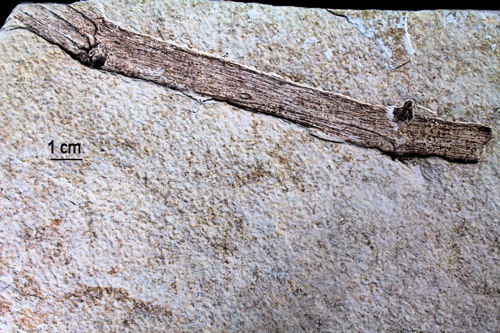
|
|
|
Return to Fish
Return to Fossils
Return to Home